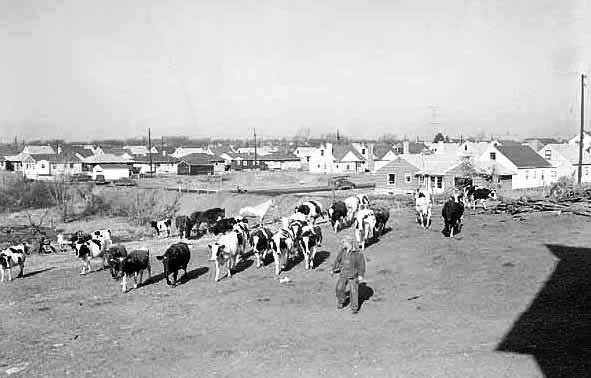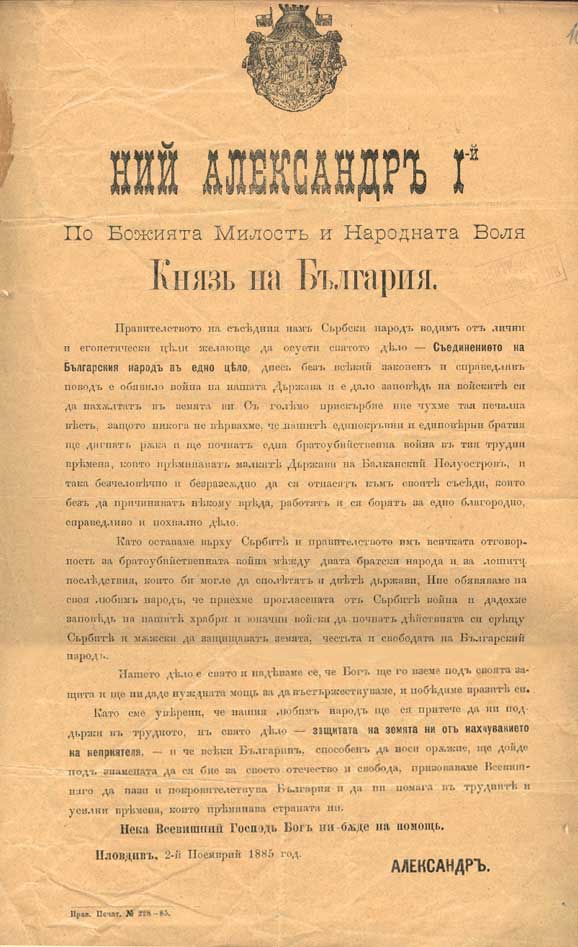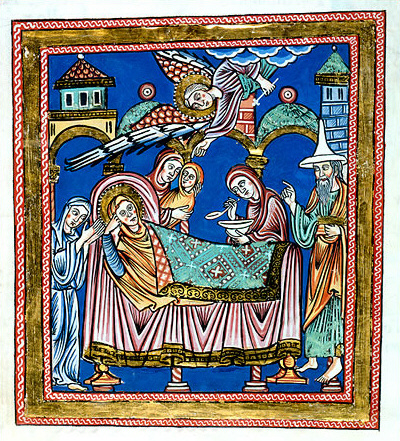|
Velika Moštanica
Velika Moštanica ( sr-cyr, Велика Моштаница) is a suburban settlement of Belgrade, Serbia. It is located in the municipality of Čukarica. Location Velika Moštanica is located 22 km south-west of Belgrade, between the Belgrade-Obrenovac (5 km away) and ''Ibarska magistrala'' (4 km away) freeways. It is statistically classified as a rural settlement (village), and experiences a steady, constant growth of population: * 1921 - 1,923 * 1971 - 2,413 * 1981 - 2,751 * 1991 - 3,084 * 2002 - 3,210 Characteristics The village has a church dedicated to the Nativity of the Blessed Virgin Mary, built in 1858. Within the churchyard is a Veteran's cemetery, where fallen in the Serbian–Ottoman Wars (1876–1878), 1885 Serbo-Bulgarian War and both Balkan and World wars A world war is an international conflict that involves most or all of the world's major powers. Conventionally, the term is reserved for two major international conflicts that occurred dur ... [...More Info...] [...Related Items...] OR: [Wikipedia] [Google] [Baidu] |
List Of Belgrade Neighbourhoods And Suburbs
A list is a Set (mathematics), set of discrete items of information collected and set forth in some format for utility, entertainment, or other purposes. A list may be memorialized in any number of ways, including existing only in the mind of the list-maker, but lists are frequently written down on paper, or maintained electronically. Lists are "most frequently a tool", and "one does not ''read'' but only ''uses'' a list: one looks up the relevant information in it, but usually does not need to deal with it as a whole".Lucie Doležalová,The Potential and Limitations of Studying Lists, in Lucie Doležalová, ed., ''The Charm of a List: From the Sumerians to Computerised Data Processing'' (2009). Purpose It has been observed that, with a few exceptions, "the scholarship on lists remains fragmented". David Wallechinsky, a co-author of ''The Book of Lists'', described the attraction of lists as being "because we live in an era of overstimulation, especially in terms of information, ... [...More Info...] [...Related Items...] OR: [Wikipedia] [Google] [Baidu] |
Obrenovac
Obrenovac ( sr-cyr, Обреновац, ) is a municipality of the city of Belgrade. According to the 2022 census results, the municipality has a population of 68,882 inhabitants, while the urban area has 25,380 inhabitants. The old name for Obrenovac was Palež. The largest Serbian thermal power plant TPP Nikola Tesla is located on the outskirts of the municipality. Stubline transmitter, one of the most powerful broadcasting stations ever built is also situated in this municipality, Obrenovac was also submerged and completely evacuated during the 2014 Southeast Europe floods. Geography Obrenovac is situated 30 km south-west of central Belgrade near bends of the river Sava to the north. The river Kolubara flows to the east of the town on its way to join the Sava. Total land area of the municipality of Obrenovac is . Apart from the town, it consists of the following villages: Some of the neighborhoods in the town are Topolice, Rojkovac, Dudovi, Rvati, Muzička kolonija, S ... [...More Info...] [...Related Items...] OR: [Wikipedia] [Google] [Baidu] |
Suburbs Of Belgrade
A suburb (more broadly suburban area) is an area within a metropolitan area. They are oftentimes where most of a metropolitan areas jobs are located with some being predominantly residential. They can either be denser or less densely populated than the city and can have a higher or lower rate of detached single family homes than the city as well. Suburbs can have their own political or legal jurisdictions, especially in the United States, but this is not always the case, especially in the United Kingdom, where most suburbs are located within the administrative boundaries of cities. In most English-speaking countries, suburban areas are defined in contrast to central city or inner city areas, but in Australian English and South African English, ''suburb'' has become largely synonymous with what is called a "neighborhood" in the U.S. Due in part to historical trends such as white flight, some suburbs in the United States have a higher population and higher incomes than their nea ... [...More Info...] [...Related Items...] OR: [Wikipedia] [Google] [Baidu] |
Pećani
Pećani ( sr-cyr, Пећани) is an List of Belgrade neighborhoods, urban settlement of Belgrade, the capital of Serbia. It is located in the municipality of Čukarica. Pećani is located 3 km south of Ostružnica, in central part of the Čukarica municipality. It is the second least populated settlement in the municipality, with a population of 562 as of 2011 census, and despite being small and depopulating (population of 632 in 1991), it is statistically classified as an urban settlement (town). There are two karstic caves near the town, called Donja Pećina and Gornja Pećina ("upper cave" and "lower cave"). In July 2023 city announced plans for massive urbanization of the Velika Moštanica-Pećani area, which would triple their combined population to 9,750. References {{Neighbourhoods of Čukarica Suburbs of Belgrade Šumadija Čukarica ... [...More Info...] [...Related Items...] OR: [Wikipedia] [Google] [Baidu] |
Svetolik Ranković
Svetolik Ranković (Serbian Cyrillic: ''Светолик Ранковић''; Velika Moštanica, Principality of Serbia, 7 December 1863 – Belgrade, Kingdom of Serbia, 18 March 1899) was a Serbian writer prominent in the period of Realism. As a realist, he was the first Serbian author to take a significant step towards the emancipation of prose from the laws of event-centered narration. He was referred to as the Russian pupil for his elegant style. Early life His father Pavle was a teacher in Velika Moštanica at the time of Svetolik's birth, and became a priest after the family moved to Garaši, a village in the Kragujevac district, near Arandjelovac. Ranković completed his high school and seminary in 1884 in Belgrade, and then went to Kyiv Theological Academy and graduated from there. In Kiev, Ranković became acquainted with theological and philosophical sciences and the history of Russian and world literature, and the works of Tolstoy, Gogol, Goncharov, Korolenko, and othe ... [...More Info...] [...Related Items...] OR: [Wikipedia] [Google] [Baidu] |
World Wars
A world war is an international conflict that involves most or all of the world's major powers. Conventionally, the term is reserved for two major international conflicts that occurred during the first half of the 20th century, World War I (1914–1918) and World War II (1939–1945), although some historians have also characterized other global conflicts as world wars, such as the Nine Years' War, the War of the Spanish Succession, the Seven Years' War, the French Revolutionary and Napoleonic Wars, the Cold War, and the War on terror. Etymology The ''Oxford English Dictionary'' had cited the first known usage in the English language to a Scottish newspaper, ''The People's Journal'', in 1848: "A war among the great powers is now necessarily a world-war." The term "world war" is used by Karl Marx and his associate, Friedrich Engels, in a series of articles published around 1850 called ''The Class Struggles in France''. Rasmus B. Anderson in 1889 described an episode in Teuto ... [...More Info...] [...Related Items...] OR: [Wikipedia] [Google] [Baidu] |
Balkan Wars
The Balkan Wars were two conflicts that took place in the Balkans, Balkan states in 1912 and 1913. In the First Balkan War, the four Balkan states of Kingdom of Greece (Glücksburg), Greece, Kingdom of Serbia, Serbia, Kingdom of Montenegro, Montenegro and Kingdom of Bulgaria, Bulgaria declared war upon the Ottoman Empire and defeated it, in the process stripping the Ottomans of their European provinces, leaving only East Thrace, Eastern Thrace under Ottoman control. In the Second Balkan War, Bulgaria fought against the other four combatants of the first war. It also faced an attack from Kingdom of Romania, Romania from the north. The Ottoman Empire lost the bulk of its territory in Europe. Although not involved as a combatant, Austria-Hungary became relatively weaker as a much enlarged Serbia pushed for union of the South Slavs, Slavic peoples. The war set the stage for the July Crisis, July crisis of 1914 and as a prelude to the First World War. By the early 20th century, Bul ... [...More Info...] [...Related Items...] OR: [Wikipedia] [Google] [Baidu] |
Serbo-Bulgarian War
The Serbo-Bulgarian War or the Serbian–Bulgarian War (, ''Srăbsko-bălgarska voyna'', , ''Srpsko-bugarski rat''), a war between the Kingdom of Serbia and the Principality of Bulgaria, erupted on and lasted until . Despite Bulgaria's status as a vassal of the Ottoman Empire, the Ottomans did not intervene in the war. Serbia initiated the fighting but suffered a decisive defeat. Austria-Hungary demanded that Bulgaria stop its invasion, and a truce resulted. The final peace was signed on in Bucharest. The existing boundaries did not change. As a result of the war, European powers acknowledged the act of Unification of Bulgaria which had happened on . Background On , Bulgaria and the semi-autonomous Ottoman province of Eastern Rumelia declared their unification in the city of Plovdiv. Eastern Rumelia, whose population was predominantly ethnic Bulgarian, had been an artificial creation of the Berlin Congress seven years earlier. The unification took place against the wi ... [...More Info...] [...Related Items...] OR: [Wikipedia] [Google] [Baidu] |
Serbian–Ottoman Wars (1876–1878)
The Serbian–Ottoman Wars (), also known as the Serbian–Turkish Wars or Serbian Wars for Independence (), were two consequent wars (1876–1877 and 1877–1878), fought between the Principality of Serbia and the Ottoman Empire. In conjunction with the Principality of Montenegro, Serbia declared war on the Ottoman Empire on 30 June 1876. By the intervention of major European powers, ceasefire was concluded in autumn, and the Constantinople Conference was organized. Peace was signed on 28 February 1877 on the basis of ''status quo ante bellum''. After a brief period of formal peace, Serbia declared war on the Ottoman Empire on 14 December 1877. Renewed hostilities lasted until February 1878. At the beginning of the conflict, the Serbian army was poorly trained and ill-equipped, unlike the troops of the Ottoman Empire. The offensive objectives the Serbian army sought to accomplish were overly ambitious for such a force, and they suffered a number of defeats that resulted from p ... [...More Info...] [...Related Items...] OR: [Wikipedia] [Google] [Baidu] |
Churchyard
In Christian countries, a churchyard is a patch of land adjoining or surrounding a church (building), church, which is usually owned by the relevant church or local parish itself. In the Scots language and in both Scottish English and Ulster Scots dialect, Ulster Scots, this can also be known as a kirkyard. While churchyards can be any patch of land on church grounds, historically, they were often used as graveyards (burial places). Use of churchyards as a place of burial After the establishment of the parish as the centre of the Christian spiritual life, the possession of a cemetery, as well as the baptismal font, was a mark of parochial status. During the Middle Ages, religious orders also constructed cemeteries around their churches. Thus, the most common use of churchyards was as a consecration, consecrated burial ground known as a graveyard. Graveyards were usually established at the same time as the building of the relevant place of worship (which can date back to t ... [...More Info...] [...Related Items...] OR: [Wikipedia] [Google] [Baidu] |
Nativity Of The Blessed Virgin Mary
The Nativity of the Blessed Virgin Mary, the Nativity of Mary, Marymas or the Birth of the Virgin Mary, refers to a Christian feast day celebrating the birth of Mary, mother of Jesus. The modern Biblical canon does not record Mary's birth. The earliest known account of Mary's birth is found in the Gospel of James (5:2), an apocryphal text from the late second century, with her parents known as Saint Anne and Saint Joachim. In the case of saints, the Church commemorates their date of death, with Saint John the Baptist and the Virgin Mary as the few whose birth dates are commemorated. The reason for this is found in the singular mission each had in salvation history, but traditionally also because these alone were holy in their very birth (for Mary, see Immaculate Conception; John was sanctified in Saint Elizabeth's womb according to the traditional interpretation of ). Devotion to the innocence of Mary under this Marian title is widely celebrated in many cultures across the ... [...More Info...] [...Related Items...] OR: [Wikipedia] [Google] [Baidu] |
Freeway
A controlled-access highway is a type of highway that has been designed for high-speed vehicular traffic, with all traffic flow—ingress and egress—regulated. Common English terms are freeway, motorway, and expressway. Other similar terms include ''wikt:throughway, throughway'' or ''thruway'' and ''parkway''. Some of these may be limited-access highways, although this term can also refer to a class of highways with somewhat less isolation from other traffic. In countries following the Vienna Convention on Road Signs and Signals, Vienna convention, the motorway qualification implies that walking and parking are forbidden. A fully controlled-access highway provides an unhindered flow of traffic, with no traffic signals, Intersection (road), intersections or frontage, property access. They are free of any at-grade intersection, at-grade crossings with other roads, railways, or pedestrian paths, which are instead carried by overpasses and underpasses. Entrances and exits to t ... [...More Info...] [...Related Items...] OR: [Wikipedia] [Google] [Baidu] |






